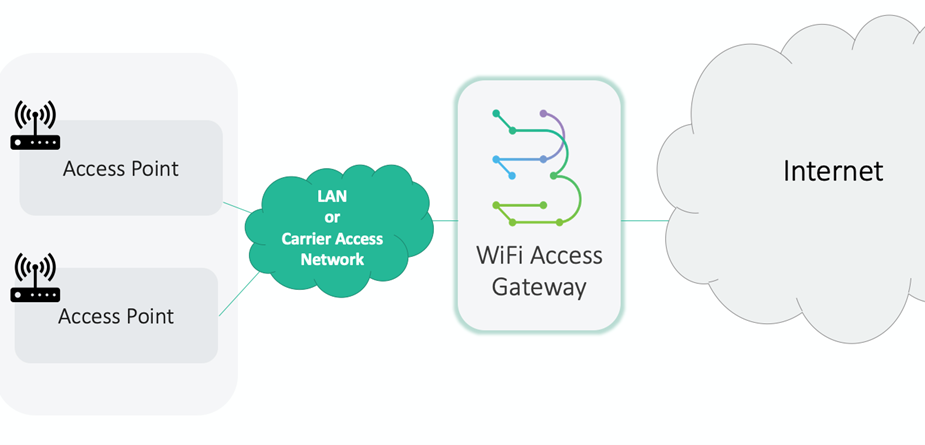What is a WiFi Access Gateway (WAG)?
A WiFi Access Gateway, or a Wireless Access Gateway, is an element in a network that serves to route data packets from a wireless LAN to another network, be it a wired or wireless WAN. In today’s network architecture, WAGs can be implemented as hardware or software (which we call virtual WAG, or vWAG).
Why is a WAG important for connectivity?
WAGs add new capabilities to the WiFi network while simplifying overall administration. WAGs assist with user authentication and can dynamically provide per-user policies for bandwidth, QoS, traffic routing, and security. A WAG can be viewed as a combination of WiFi controller, router, DHCP server, and firewall – all integrated into one solution.
Essentially, WAGs make it possible to better manage traffic and bandwidth allocation, apply subscriber policies, improve mobility, and dramatically increase security.
Where does a WAG/vWAG sit in the network?

WAG sits in between access networks and the Internet, ensuring that traffic can be managed according to policy.
Who needs a WAG?
WAG can be used in a variety of deployments & uses cases including Public & Community (Hotspot) WiFi, Education, Mobile Network Offload, Smart Cities, Venue WiFi, Hospitality WiFi, Multi-Dwelling Units (MDU), and more.
Key requirements that WAGs often fill are:
- Enabling disparate WiFi networks or hotspots across a large number of branches or locations to behave like one unified, managed network
- Data plane flexibility – control plane and user (data) plane separation architecture for ultimate agility
- Layer 3 roaming for mobility and freedom without compromising connectivity and experience
- Handling large volumes of guest WiFi users with fast-mobility, persistent authentication state, and carrier-grade NAT
- Enabling dynamic micro-segmentation of the network for better traffic control and security
- Adding capabilities like deep-packet inspection, content filtering, parental filtering, malware and phishing protection, firewall, and advanced hierarchical bandwidth management
- Cost reductions to eliminate separate network nodes for routing, DHCP, and firewall/security.
Read more on WAG functions and use cases here.
Use Cases
Solution Guides
Resources
SOLUTION PAGES
Enterprise Wi-Fi & Switching
Hospitality
Primary Education
Campus Connectivity
Multi-Dwelling Units
Wi-Fi Backhaul